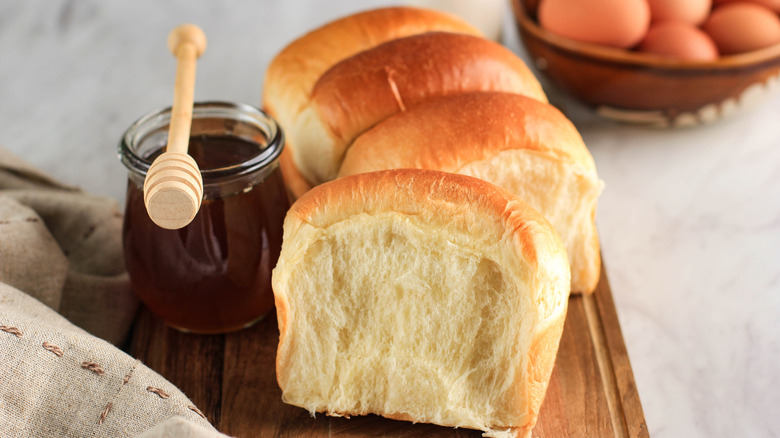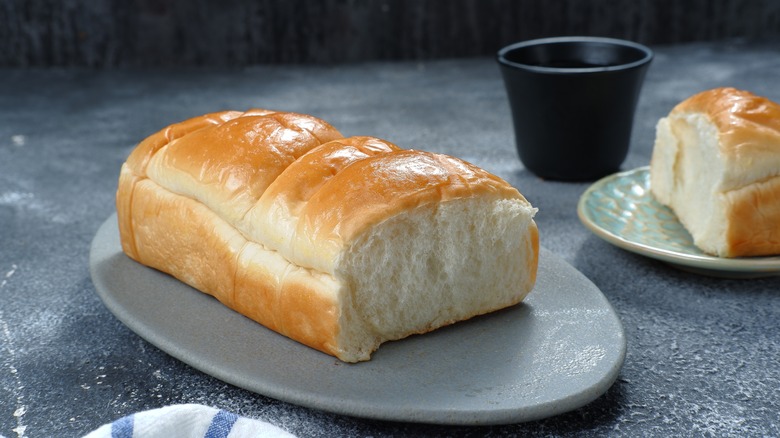Why Japanese Milk Bread Is The Perfect Choice For French Toast
Few words inspire more glee and anticipation than "We're having French toast." With its creamy interior and slightly crisp exterior (dripping with butter and syrup) French toast is both a flavor and textural delight. The idea behind this breakfast table staple is simple enough: Dip sliced bread in an egg/milk mixture and pan fry it. However, French toast can be deceptively hard to get right, and sogginess is the most common complaint. The main key to mitigating soggy French toast is choosing the right bread, both in terms of thickness and general texture. Brioche or sourdough are common options, but there's another type of bread whose qualities seem to be tailor-made for a delicious twist on French toast: Japanese milk bread.
Also called shokupan or Hokkaido milk bread, Japanese milk bread is a sweet, milky white bread that first established its hold among the bread-obsessed in Tokyo bakeries and cafés. The bread is tender, fluffy, cloud-like, springy, and sturdy enough for a wide range of applications (including delicious French toast). Milk bread isn't always the easiest item to find, but you can make soft, pull-apart milk bread yourself, though you'll want to be discerning in the recipe you choose. Genuine Japanese milk bread is prepared using a specific technique that ensures the texture is exactly what you want for French toast.
The tangzhong method gives Japanese milk bread its amazing texture
Tangzhong is an Asian technique that involves pre-cooking a small portion of bread dough flour with milk or water to form a roux. When the mixture reaches a thick, paste-like consistency, it is mixed back into the rest of the dough and then baked, resulting in the delicious springy texture of Japanese milk bread.
The science behind the toothsome results of tangzhong involves cooking a portion of the starches before baking them. Before baking, starch molecules are tight and orderly. When water and heat are introduced, these molecules spread out and apart into delicious, soft chaos; they gelatinize, in other words. (When they lose moisture over time, they come back together in their tight formation — that's why bread gets stale.)
With tangzhong, the effects of this process are enhanced, significantly increasing Japanese milk bread's fluffiness and softness over other breads. The texture is not unlike that of Hawaiian rolls, a great bread substitute for French toast. Even better is the fact that milk bread tends to go stale later than other types of bread — all the more reason to buy a loaf to try in your next batch of French toast.

